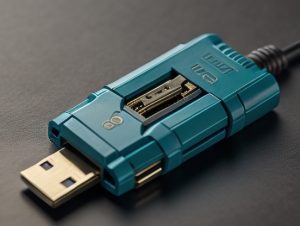
Even 18-20 years ago, connecting innovative gadgets to a PC was a big problem. However, today this problem has been solved, as every user can purchase the much-needed USB – Universal Serial Bus.
In the 1990s, the history of the formation and development of the USB format began. Developers from Intel, Microsoft, Philips, and US Robotics have made considerable efforts to achieve this. They set out to create an interface that would allow you to connect one, two, or more devices, and be clear and easy to use for most people.
USB 1.1
The first personal computers with built-in USB began to appear on the market in the late 1990s, and the first PCs with USB began to appear in 1995. As a rule, they were located on the back of the device and supported the USB 1.1 standard, which was characterized by an exchange rate of up to 12 Mbps.
However, there were a limited number of such PCs, so they were periodically called Useless Serial Bus. But this did not last long, as manufacturers quickly realized that this would be a very profitable business, and the advantages of the new technology were obvious, so in the early noughties, most printers and scanners could be connected via USB.
USB 2.0
The year 2000 was marked by the improvement of the current version of USB technology, so the USB 2.0 version was introduced.
It got rid of many problems, for example, it concerned the speed of information transfer. This was the impetus for the development of flash drives, which turned out to be much more convenient and functional than the already known floppy disks, whose formats were characterized by a small capacity. In addition, USB drives managed to change optical media.
This connection format proved to be convenient for connecting any peripherals, Wi-Fi adapters, and other devices. And the transfer rate of 480 Mbps made it possible to make these and many other gadgets removable.
In most cases, modern devices are designed to support the USB 2.0 standard.
USB 3.0.
However, if you need to reboot the operating system or transfer large information files from one device to another, it is better to use USB 3.0 technology, as it is characterized by a transfer speed of 5 Gbps and allows you to exchange entire photo albums, 1080p video footage, and lossless audio files quickly without losing quality.
For example, Intel chipsets support up to 14 USB ports per computer.
Thus, versatility, ease of use, and speed are the main reasons why many modern laptops are equipped with USB-only expansion ports.

